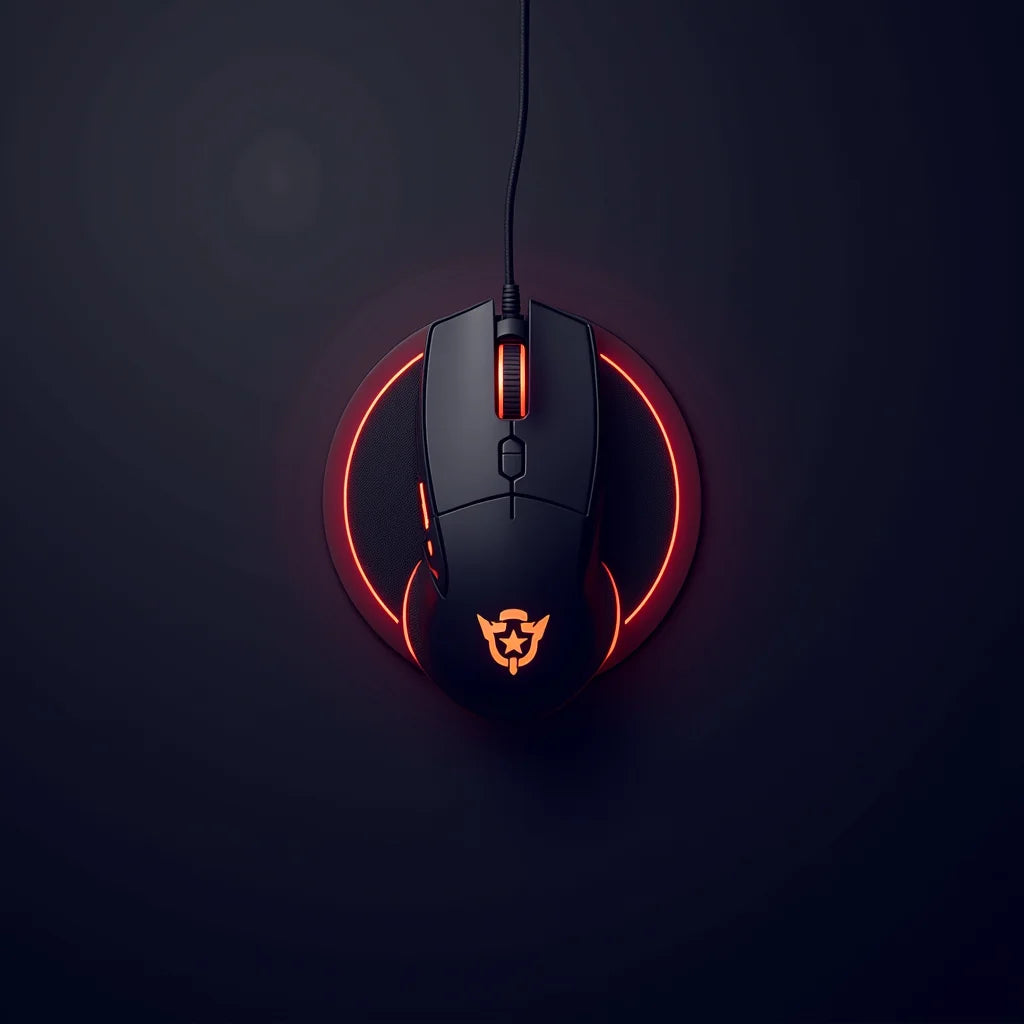
Gaming Peripherals Setup That Maximizes Precision and Ease
Nova Electronics Nova ElectronicsShare
Updated on: 2025-10-11
Table of Contents
- Introduction to a gaming peripherals setup focused on performance and comfort
- Product spotlight: best gaming keyboard and mouse combo for a balanced gaming peripherals setup
-
Step-by-step how-to: gaming peripherals configuration for ergonomics and speed
- Step 1: Map your desk layout and monitor position
- Step 2: Adjust keyboard height, tilt, and angle
- Step 3: Dial in mouse DPI, polling, and surface
- Step 4: Calibrate headset audio and mic
- Step 5: Tame cables and manage power
- Step 6: Create macros and cross-platform profiles
- Step 7: Test, benchmark, and iterate
- Personal experience: refining a PC gaming setup through small changes
- Summary and recommendations: finalize your gaming accessories setup
- Q&A on building a gaming peripherals setup
- About the author behind this gaming peripherals setup guide
Introduction to a gaming peripherals setup focused on performance and comfort
A well-planned gaming peripherals setup transforms how you play and how your desk feels over long sessions. The right gaming accessories setup aligns your keyboard, mouse, audio, and display so that every movement is precise and every decision is fast. This guide explains an end-to-end gaming peripherals configuration that suits competitive play and casual gaming, and it scales for small or large spaces. You will learn how to choose the best gaming keyboard and mouse combo for your needs, how to tune device software, and how to build an ergonomic PC gaming setup that reduces strain and boosts reaction time.
The core principle is simple: eliminate friction between intention and action. That means a clean desk, predictable inputs, and profiles that remain consistent across titles. When your hands rest naturally and your devices respond with minimal latency, your focus shifts from fighting hardware to playing at your best.
Product spotlight: best gaming keyboard and mouse combo for a balanced gaming peripherals setup
For most players, the fastest path to a measurable upgrade is a balanced keyboard and mouse duo. Look for a tenkeyless or compact mechanical keyboard paired with a light, high-DPI mouse. This pairing conserves space, enables larger mouse swipes, and supports both low and high sensitivity styles.
Key features to prioritize in the keyboard:
- Hot-swappable mechanical switches for easy tuning of feel and sound.
- Per-key RGB with onboard memory for profile portability between systems.
- Adjustable feet and optional wrist rest to maintain a neutral wrist angle.
- Detachable USB-C cable for simple cable management and travel.
Key features to prioritize in the mouse:
- Accurate optical sensor with native DPI from 400 to 26,000+ for granular tuning.
- Polling rates up to 1000 Hz or higher for fast input reporting.
- Weight under 75 g if you prefer low-effort flicks; slightly heavier if you prefer steadier tracking.
- Textured sides and low-friction feet for controlled precision and smooth glides.
If you need a simple, reliable starting point for a gaming peripherals setup, a compact mechanical board and an ambidextrous medium-size mouse deliver broad comfort and control. As your preferences evolve, you can swap switch types or adjust grips without replacing the whole combo. For a wider range of gear, explore the store’s catalog under All products or browse the homepage for newly added peripherals on Store.
Step-by-step how-to: gaming peripherals configuration for ergonomics and speed
Step 1: Map your desk layout and monitor position
Start with your chair height so your feet sit flat and knees form roughly a right angle. Set your desk height so forearms are level when typing. Center the monitor at eye height so your neck stays neutral. Place the keyboard so its home row aligns with your shoulder line. Leave ample mouse space to the right or left, depending on your dominant hand. This foundation prevents strain and allows consistent inputs in any game.
Step 2: Adjust keyboard height, tilt, and angle
Set the keyboard flat or with a slight negative tilt to reduce wrist extension. Angle the board a few degrees toward your mouse side to minimize shoulder rotation, especially in shooters where you hold WASD for long periods. If your keyboard supports onboard layers, create a “Game” layer that disables the Windows or Command key and maps media keys away from WASD to avoid accidental presses. A stable keyboard position is a cornerstone of an ergonomic gaming accessories setup.
Step 3: Dial in mouse DPI, polling, and surface
Choose a consistent baseline DPI (for example, 800, 1200, or 1600) and combine it with in-game sensitivity to hit your preferred eDPI. Set polling rate to 1000 Hz for most setups unless battery life is a priority on wireless devices. Use a large mousepad to support broad arm movements if you prefer low sensitivity. Mark the pad’s edges with small tape tabs under the pad so it returns to the same place after cleaning. This stable foundation makes your gaming peripherals configuration predictable day after day.
Step 4: Calibrate headset audio and mic
Position your headset so the drivers sit over the ear, not on it, to maintain clarity and comfort. In software, disable loudness normalization that muddies directional cues. Set microphone gain so voice is clear without clipping. Push-to-talk reduces unwanted noise in team play. If your headset includes virtual surround, compare it to stereo in your main titles and choose whichever delivers more consistent spatial awareness for you.
Step 5: Tame cables and manage power
Route keyboard and mouse cables through a rear grommet or along the desk’s underside. Use a bungee for the mouse if it is wired. Bundle wires into one channel and label both ends. Keep the power strip within reach but off the floor. A tidy layout removes snag points that can ruin a crucial flick or force a reposition mid-match. If you need basic accessories, check availability on All products.
Step 6: Create macros and cross-platform profiles
Use your keyboard software to store profiles on-device so your bindings travel between computers. Keep one “Default” profile for everyday use and one “FPS” profile with function row remaps. On the mouse, program two side buttons for utility actions, and bind a DPI shift if you snipe. Keep macros simple and compliant with game rules. Document your bindings in a note you can open on startup to reinforce muscle memory.
Step 7: Test, benchmark, and iterate
Measure results with repeatable aim drills and short scrims. Adjust one variable at a time, then retest. Keep a simple log of changes to DPI, polling, and keyboard angles. After a few sessions, lock your settings and stop tweaking. Consistency trains the hands better than constant novelty. This iterative approach builds a stable PC gaming setup that supports long-term improvement.
Personal experience: refining a PC gaming setup through small changes
After years of switching layouts, the most effective change was reducing desk clutter and aligning devices with my shoulder line. Moving from a full-size board to a compact model opened mouse space and cut accidental key presses. Lowering mouse DPI slightly improved micro-adjustments in tactical shooters. The result was not dramatic in a single night, but over weeks the consistency paid off with steadier tracking and less fatigue. Small, deliberate updates outperformed major overhauls.
Summary and recommendations: finalize your gaming accessories setup
Focus first on fundamentals: chair height, desk posture, and monitor alignment. Select a compact mechanical keyboard and a precise, comfortable mouse that match your grip and sensitivity style. Standardize DPI and polling. Map simple macros, manage cables, and save profiles on-device. Then test and iterate. This process yields a dependable gaming peripherals setup that supports fast reactions and clear decision-making.
- Choose devices that prioritize feel, accuracy, and stability over novelty.
- Keep inputs consistent across games to strengthen muscle memory.
- Favor clean desk layouts to reduce friction and free movement.
- Revisit settings quarterly, not daily, to avoid chasing diminishing returns.
For curated device categories and store updates, visit the News section or reach the team through Contact with specific configuration questions.
Q&A on building a gaming peripherals setup
What peripherals do I need for a complete gaming setup?
The essentials are a mechanical keyboard, a responsive mouse, a large mousepad, and a comfortable headset. Add a quality monitor with a high refresh rate to reduce blur and a sturdy chair to support posture. Optional items include a microphone for team comms, a gamepad for compatible titles, and a USB hub to centralize connections. Start with the basics, then add only what measurably improves control or comfort.
How do I arrange my gaming peripherals for ergonomics and performance?
Align the keyboard with your shoulders and keep your wrists neutral. Place the mouse close to the keyboard to minimize reach. Position the monitor at eye height and an arm’s length away to reduce neck and eye strain. Use a large mousepad so you do not lift the mouse during typical movements. Lastly, route cables away from the mouse path and keep the desk surface clear so your hands move freely.
How can I create a budget-friendly gaming peripherals setup for small desk spaces?
Use a compact keyboard to reclaim mouse space and select a medium-size mouse that fits your grip without overhang. Choose a desk mat that doubles as a mousepad to reduce separate accessories. Opt for wired devices if you want value and avoid recharging. Mount a small monitor arm to open desk surface area. This trimmed approach delivers a budget-friendly gaming peripherals setup for small desk spaces without sacrificing control.
About the author behind this gaming peripherals setup guide
Nova Electronics Nova Electronics
Nova Electronics Nova Electronics focuses on practical configuration strategies for gaming peripherals and workspace optimization. The team tests input devices, audio solutions, and desk layouts to deliver clear recommendations that fit real desks and real playstyles. Thank you for reading, and enjoy building a setup that feels as good as it performs.
